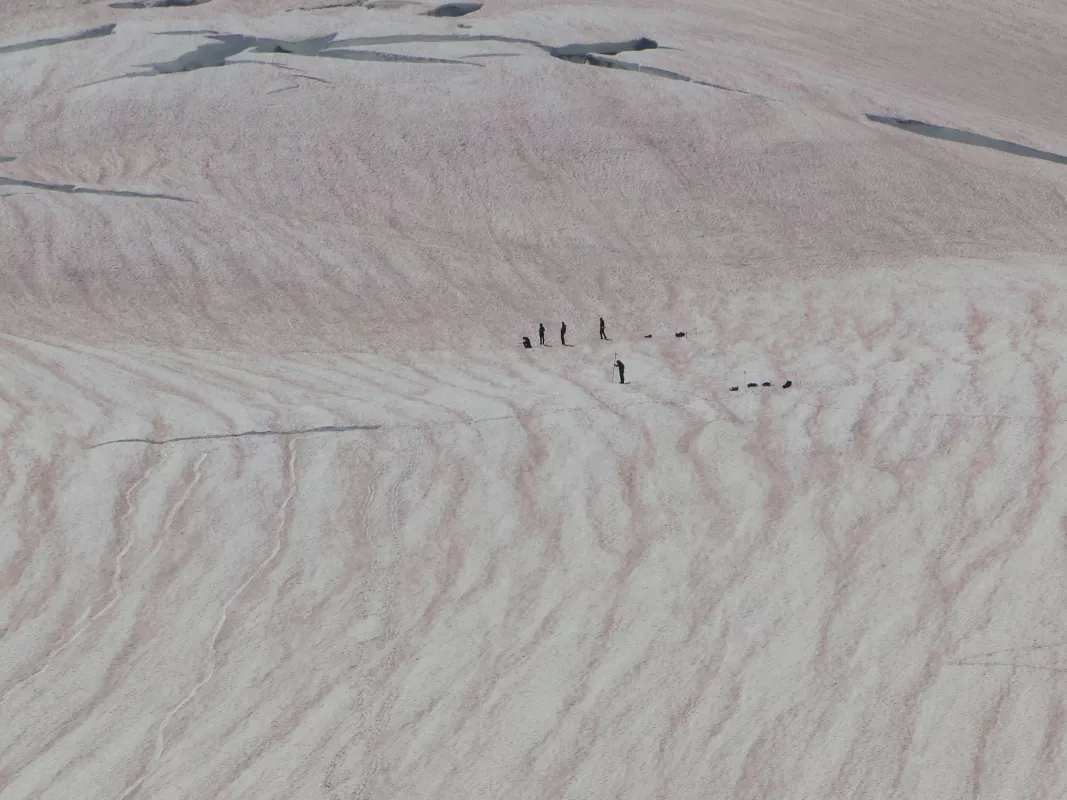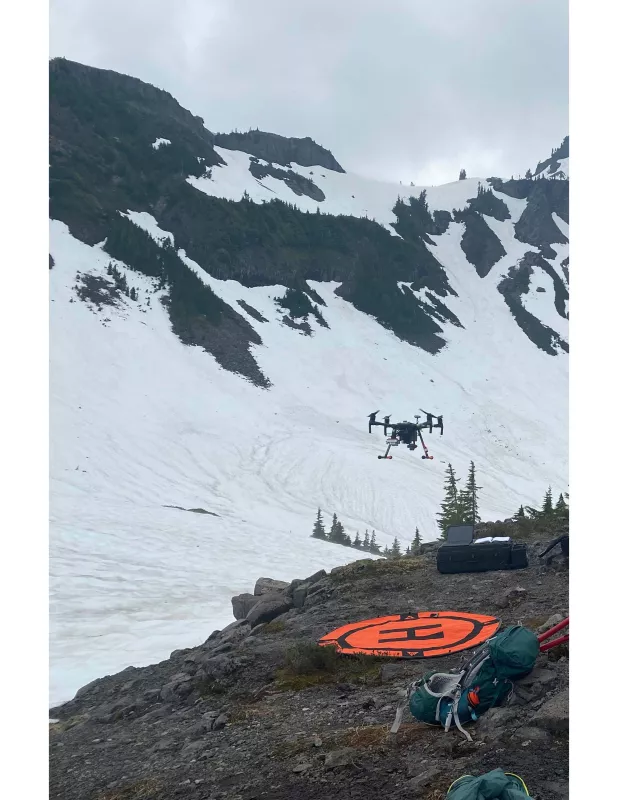Algae that commonly grow on snow in the Pacific Northwest have been ignored in melt models, but their presence significantly increases snowmelt compared with clean, white snow, according to a first-of-its-kind scientific research study conducted on Mt. Baker in the North Cascades, Washington. Alia Khan, affiliate research scientist at the National Snow and Ice Data Center (NSIDC) and assistant professor at Western Washington University, is the principal investigator and senior author of the study. Clean snow reflects as much as 99 percent of incoming solar radiation, helping to protect Earth’s atmosphere from warming. Algae, often red in color, commonly bloom on snow in the summer months in the Pacific Northwest. They cause the albedo, or reflectivity, of the snow to decrease by around 20 percent. That energy is absorbed rather than reflected back to space because of the algae’s darker color. Results of the study were published on May 8, 2023, in Nature Communications Earth & Environment.
“Snow algae are very common in high alpine mid-latitude snowpacks, especially in the Pacific Northwest, yet they have not been considered drivers of snowmelt and are not included in regional watershed melt models,” said Khan. “At the height of the summer, the algae become dark red, resembling blood on snow. As climate change continues to warm the region, we expect snow algae bloom intensity to increase, which will likely have repercussions on the timing and magnitude of seasonal snowmelt in the North Cascades.”
The North Cascades spring snowpack declined by about 38 percent between 1938 and 2016 because of increasing atmospheric temperatures, and it is projected to decrease an additional 38 to 46 percent by 2050, relative to the 1970 to 1999 average. However, these projections have been calculated without taking into consideration the impacts of snow algae, which could further exasperate spring snow melt. Glacier area in the North Cascades has also decreased by 56 percent over the last century. As snow cover decreases, glacier ice, which is inherently darker than snow, is exposed to solar radiation for longer periods of time, exacerbating glacier ice melt. “Along with water resources, snow and ice melt in the North Cascades are important to stream and river temperature regulation downstream, providing a flux of cold meltwater into the systems that support salmon spawning during the late summer dry season,” said Khan. “This is becoming increasingly important because of lingering heat waves. Changes to the timing and magnitude of spring snow melt, and summer ice melt, impact downstream salmon spawning habitat, as well as tribal communities for which salmon hold great cultural and subsistence importance, such as the Nooksack Tribe and Lummi Nation.”
Researchers for this study used both in-situ, or on-the-ground, measurements, as well as uncrewed aerial vehicles (UAVs) affixed with multi-spectral cameras. While previous research studies on the remote detection of snow algae have used satellite imagery, this study employed UAVs to help them detect snow algae across large, inaccessible areas.
“UAVs are a game changer for mapping snow algae in remote and hard-to-access parts of the cryosphere,” said Khan. “For this work we flew a multi-spectral camera on a UAV and then collected coincident ground measurements to develop an algorithm that identifies snow algae in the imagery we collect. Now that we have developed a ground-verified methodology, we can cover larger areas, and more frequently, with future UAV flights than we can with only ground sampling by foot or ski. We can also apply our methods to even less accessible places like snow on glaciers that are heavily crevassed.”
Understanding the impact of snow algae on snowmelt timing and magnitude is crucial to improving melt models not just in the Pacific Northwest, but also in other mountain ranges like the Colorado Rockies and Sierra Nevada in California. This research was funded by a National Science Foundation Faculty Early Career Development Program (CAREER) Award and a Northwest Climate Adaptation Science Fellowship.


